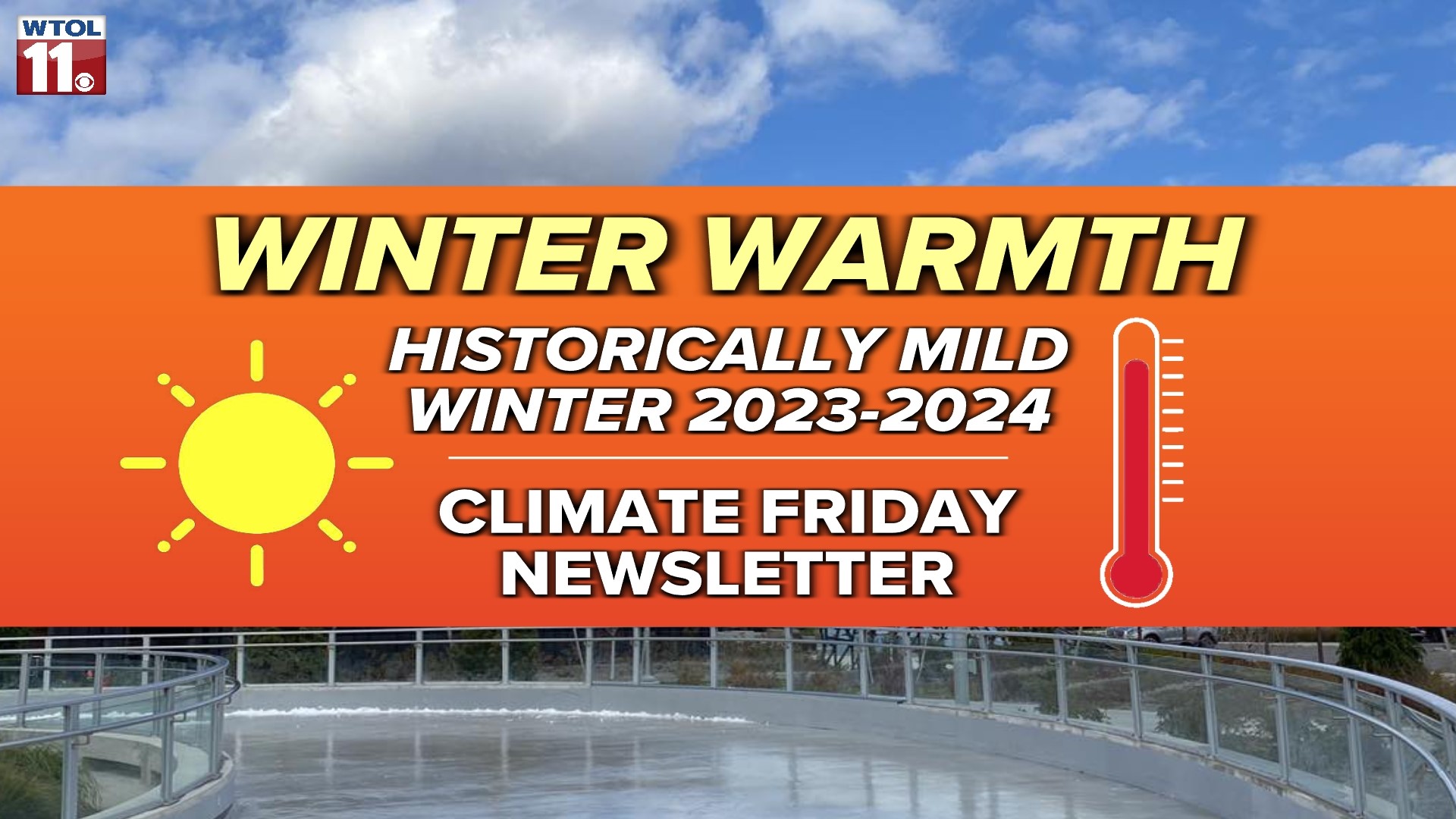TOLEDO, Ohio — Though March officially kicks of the meteorological spring season, this winter has lacked major cold and significant snowfall. With all eyes on spring, it’s time to recap the winter season - or lack thereof. In this week’s Climate Friday, Meteorologist John Burchfield will break down the numbers form this spring.
Though meteorological winter begins in December, the month felt more like a continuation of fall. With an average temperature of 41.7 degrees, December 2023 went down in the history books as the warmest on record in the Toledo area. December not only set records for its mild temperatures, but also nonexistent snowfall.
With just a trace of accumulation, December tied for the least snowy in Toledo history. At the tail end of the month, temperatures surged near 60 degrees on Christmas Day, and the holiday brought sunshine instead of snow. Though New Year’s Eve featured a few snow flurries, the year ended with milder than normal temperatures.
January started off with temperatures above-average, but closer to normal in the upper-30s. Our first measurable snowfall of the winter season fell on Jan. 7, bringing 0.4 inches of accumulation at Toledo Express Airport.
Our first meaningful accumulation of the year fell on the Jan. 11 and 12, when a combined 3.5 inches coated the winter landscape. Following this snowfall, temperatures plunged below average for the first time of the winter. On Jan. 14, the mercury plummeted to zero degrees. The next day, temperatures dropped below zero for the first time of the winter season.

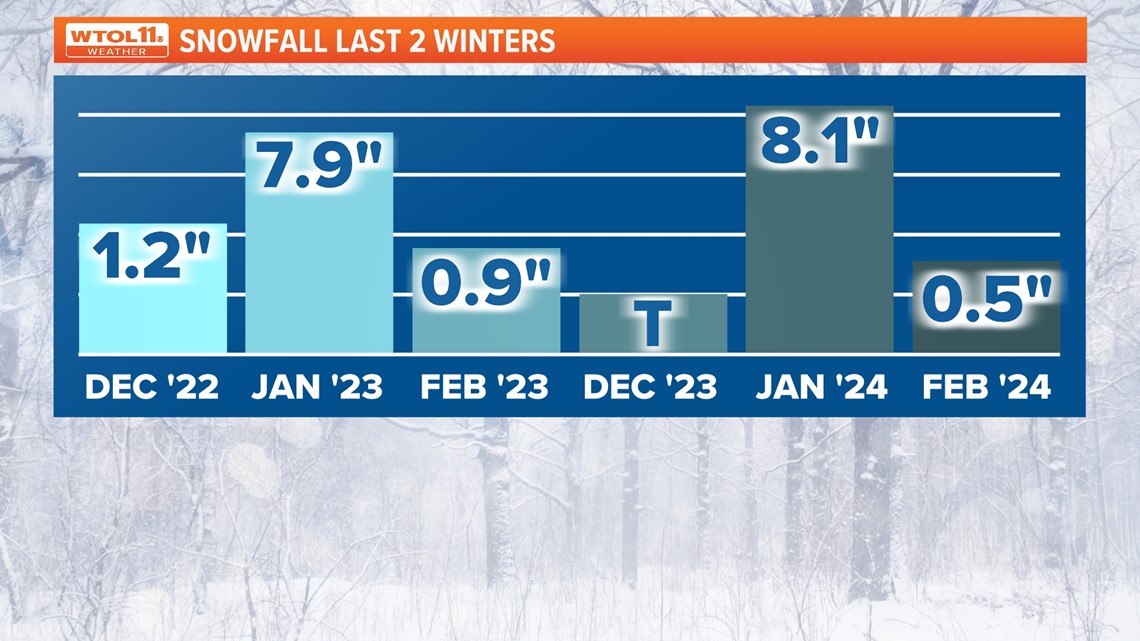
RELATED: Climate Friday | After a snowy, frigid mid-January, where does Toledo stand on winter averages?
After a chilly stretch of weather mid-month, January ended with mild temperatures largely in the 40s. Despite the ups and downs in the weather, January ended up statistically milder than average with temperatures 1.6 degrees above the monthly normal.
February brought the return of mild conditions with temperatures surging to the 60s several times and even topping out in the 70s once. The Feb. 27 high temperature of 73 shattered the previous record of 66 from 1996, officially making history as the warmest winter day ever recorded in Toledo.
EARLIER COVERAGE: Tuesday breaks record for warmest February day ever

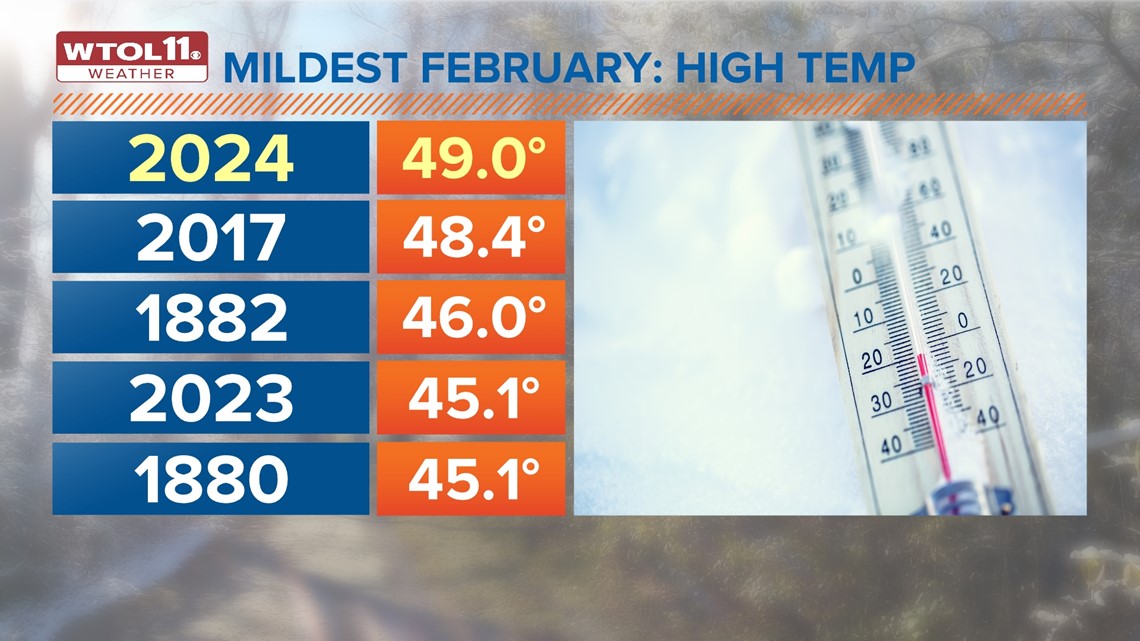
All told, February featured historically mild conditions with an average high temperature of 49 degrees, making it the warmest on record by this metric. Looking at mean temperature, which includes overnight lows, February ranked as the second warmest on record at 38.9 degrees.
As we round the corner into spring, what weather trends will prevail? March will start off with unseasonable warmth as temperatures surge near record levels this weekend. Saturday’s record high of 64 degrees set back in 1882 will be in jeopardy as highs climb to the 60s. Sunday’s forecast will likely surpass the current standing record of 71 degrees from 1976. Temperatures will climb to the mid-70s Monday, challenging the record of 76 degrees from 1983.
Mild conditions will likely last into the first couple weeks of March as El Niño remains in control of the weather pattern. Though this broader El Niño pattern has shaped our winter weather, climate change has undoubtedly contributed to the unseasonable warmth. Across the country, 2731 daily high temperature records have been set in the past month, showing the magnitude and scale of the mild winter weather. Only 53 low temperature records have been set across the country.

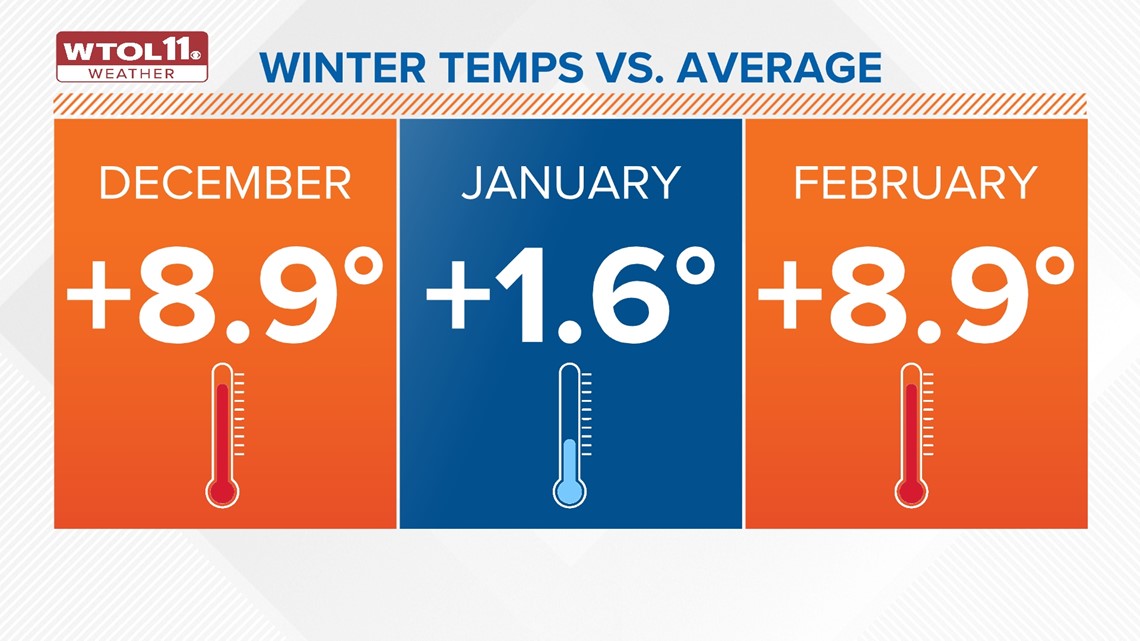
For many Americans, this winter will go down in the record books as one of the warmest on record. In the Toledo area, the winter of 2023-2024 ranks as the third warmest on record with an average temperature of 36.5 degrees. Topping the list are the winters of 1931-1932 and 1879-1880, which featured an average temperature of 36.9 degrees.

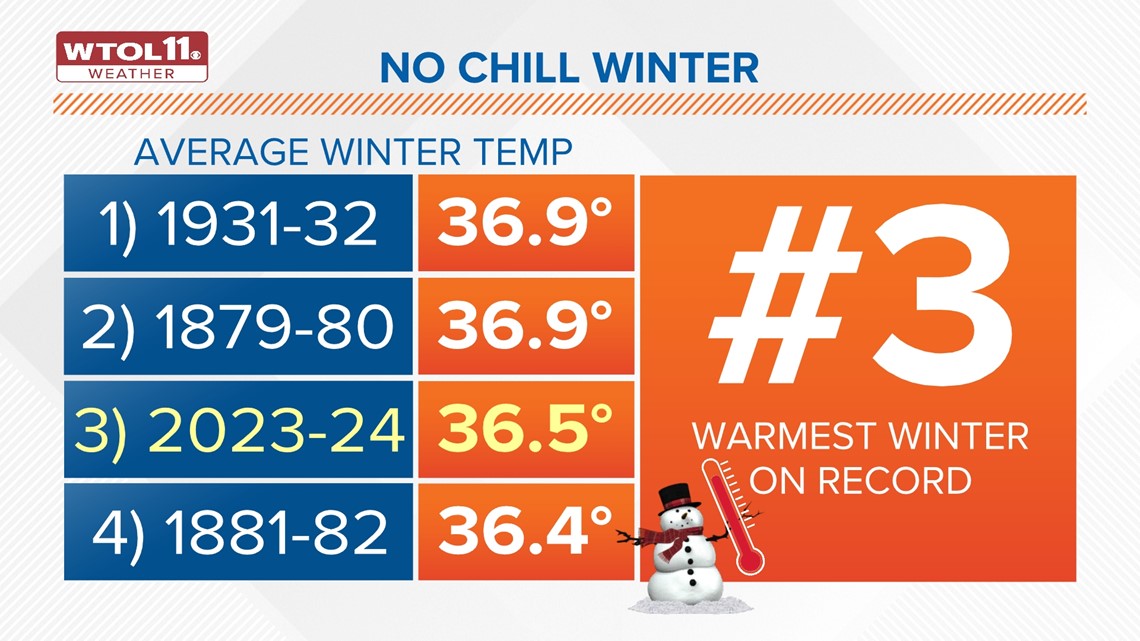
This winter will make history due to its incredibly mild December and February weather. With spring right around the corner as well as the total solar eclipse, the WTOL 11 weather team will keep you updated on whatever weather Mother Nature has in store.
Watch more Climate Friday:

